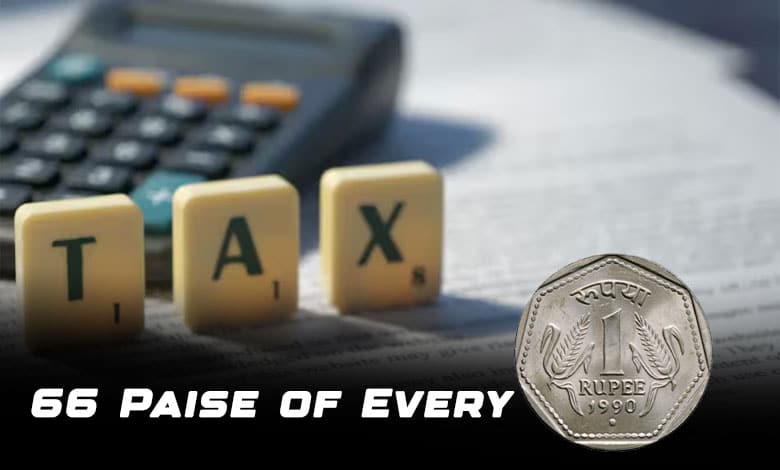Direct and Indirect Taxes Contribute 66 Paise of Every Rupee in Government’s Revenue: Union Budget 2025-26
As per the Union Budget 2025-26 documents, direct and indirect taxes will account for the lion's share of the government's revenue, contributing 66 paise of every rupee in the government's coffers.

As per the Union Budget 2025-26 documents, direct and indirect taxes will account for the lion’s share of the government’s revenue, contributing 66 paise of every rupee in the government’s coffers. The breakdown of the revenue sources highlights the central role of taxation in funding the government’s expenditures.
Table of Contents
Revenue Breakdown: Direct Taxes and Indirect Taxes Dominate
According to the budget documents, the largest contribution to the government’s revenue comes from direct and indirect taxes, which together account for 66 paise of every rupee collected. Of this:
- Direct Taxes: Around 39 paise will come from direct taxes, which include corporate tax and individual income tax. Specifically, income tax will contribute 22 paise, while corporate tax will account for 17 paise.
- Indirect Taxes: Indirect taxes, primarily the Goods and Services Tax (GST), will provide the highest revenue within this category, contributing 18 paise of every rupee. Additionally, excise duties will contribute 5 paise and customs duties will account for 4 paise.
Also Read: Key Highlights of Union Budget 2025-26: A Comprehensive Overview
Apart from taxes, the government is expected to generate 24 paise of every rupee through borrowings and other liabilities, while 9 paise will come from non-tax revenue sources such as disinvestment, and 1 paise from non-debt capital receipts.
Government Expenditure Breakdown
The government’s spending plan for the fiscal year follows a structured allocation, with the largest share going towards interest payments and the states’ share of taxes and duties. The expenditure breakdown includes:
- Interest Payments: 20 paise of every rupee is earmarked for interest payments on the government’s debt.
- States’ Share of Taxes: The states’ share of taxes and duties is pegged at 22 paise of every rupee.
- Defence: The allocation for defence stands at 8 paise per rupee, ensuring robust investment in national security.
- Central and Centrally-Sponsored Schemes: 16 paise will be allocated for central sector schemes, while 8 paise will go towards centrally-sponsored schemes aimed at benefiting state governments.
- Other Expenditures: The government will also spend 8 paise on “other expenditures,” which covers various ongoing projects and initiatives.
Social Welfare and Pension Expenditure
- Subsidies and Pension: The government will spend 6 paise for subsidies and 4 paise for pension outlays, indicating a commitment to social welfare schemes and support for pensioners.
The Budget documents provide a detailed and clear fractional breakdown of how each rupee is earned and spent by the government, reflecting the fiscal policies laid out by Finance Minister Nirmala Sitharaman in her Budget speech. This budget continues the government’s push for fiscal prudence while addressing key sectors like defence, social welfare, and infrastructure.
A Holistic Approach to Fiscal Management
In her budget, Sitharaman emphasized a balanced approach to governance, ensuring that funds are allocated effectively to boost economic growth while managing fiscal deficit levels. The detailed breakdown of revenue sources and expenditures will be pivotal in shaping the financial landscape in the coming year, with an eye on boosting both domestic and international economic confidence.
This transparent financial framework, outlined in the Budget, underscores the government’s focus on maintaining fiscal discipline while promoting sustainable growth and supporting critical sectors such as defence, social welfare, and infrastructure.
